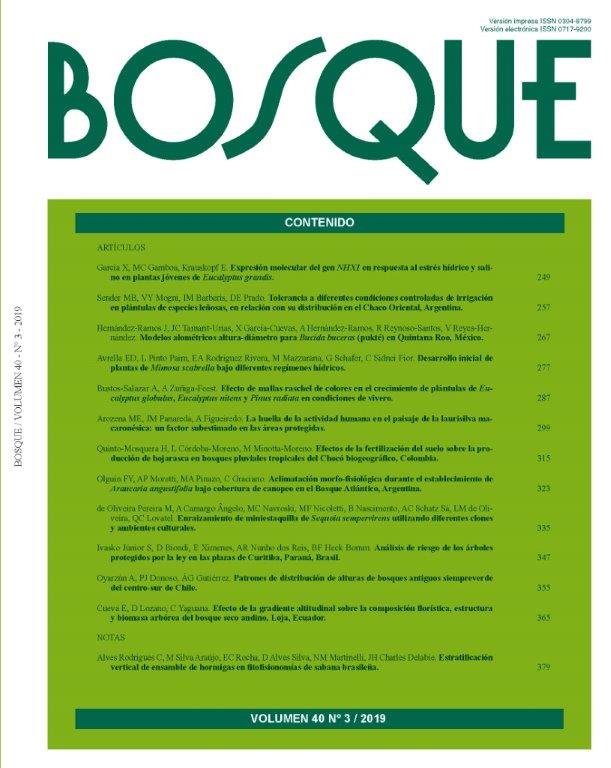Height-diameter mixed-effect allometric models for Bucida buceras (pukté) in Quintana Roo, Mexico
Main Article Content
Abstract
Knowing the allometric relationship between the total height and the diameter (At-d) is an important technical tool to reduce times and costs in the realization of timber forest inventories; in addition, it gives certainty to volume estimates in a management plan. Quintana Roo, Mexico, has timber species of commercial importance and it is necessary to represent this relationship, therefore, the objective was to fit At-d models for trees of Bucida buceras (pukté) under the mixed effects approach. A sample of 996 trees measured in the National Forestry and Soil Inventory 2004-2009 was processed and the Schumacher model was fitted under ordinary least squares (OLS) and mixed effects model (MEM), where the control of variability was performed by groupings using three classification criteria: cup diameter class, average cup diameter and by conglomerate. Each grouping criterion was considered as an independent level. When comparing the fit of the MCO model against that of MEM, it was determined that the best values in the Akaike and Bayesian Information Criteria were presented by the MEM approach. The fit was higher when grouped by conglomerate (Pseudo-R2 = 0.346, approach classic, Pseudo-R2 = 0.815, mixed effects) with a bias of -0.46 m. The proposed model is reliable to estimate the At as a function of d for this species in the tropical forests of Quintana Roo.

